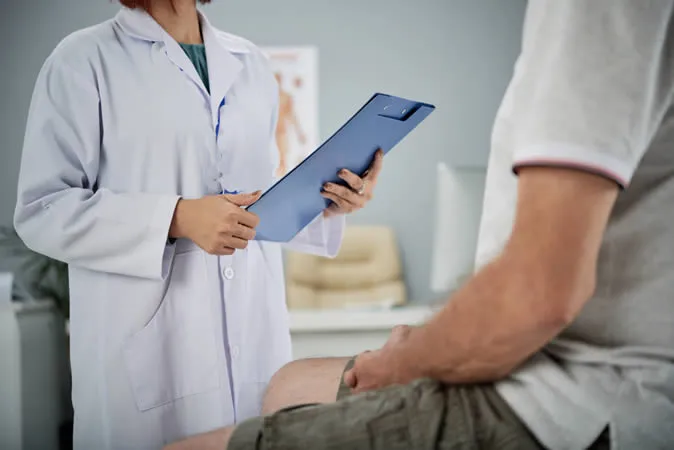What is Pityriasis Rosea?
Pityriasis rosea is a skin condition that causes a temporary rash of raised red scaly patches on the body. It is not contagious and usually goes away on its own within 6 to 10 weeks . The exact cause of pityriasis rosea is unknown, but it may be triggered by a viral infection or a reaction to certain drugs . The most common symptom of pityriasis rosea is a single large patch called the herald patch, which appears before the generalised rash of smaller oval patches . The rash may be itchy and may affect different parts of the body, such as the chest, back, abdomen, arms, and legs . Pityriasis rosea is diagnosed by examining the skin and sometimes by doing a skin biopsy or blood test . There is no specific treatment for pityriasis rosea, but some medications such as antihistamines or corticosteroids may help relieve the itching and inflammation . Pityriasis rosea usually does not cause any serious complications, but it may leave temporary spots of skin discoloration after the rash heals. Pityriasis rosea can affect anyone, but it is more common in young adults and middle-aged adults (20-49 year-olds).

What are the signs and symptoms of Pityriasis Rosea?
The signs and symptoms of pityriasis rosea are:
- A single large patch of red scaly skin, called the herald patch, that appears before the generalised rash. The herald patch is usually round or oval and may be 2 to 10 cm in diameter. It may be located on the chest, back, abdomen, neck, or face .
- A generalised rash of smaller patches of red scaly skin, that appear 1 to 2 weeks after the herald patch. The smaller patches are usually oval and may be 0.5 to 1.5 cm in diameter. They may be arranged in a pattern that follows the lines of the skin, called the Christmas tree pattern. The rash may affect different parts of the body, such as the chest, back, abdomen, arms, and legs .
- Itching, which may range from mild to severe. The itching may be worse at night or after a hot shower or bath .
- Other symptoms, such as fever, headache, sore throat, fatigue, nausea, or joint pain, which may occur before or during the rash. These symptoms are usually mild and short-lived .
Pityriasis Rosea in Pregnancy
Pityriasis rosea is a skin condition that causes a temporary rash of raised red scaly patches on the body. It is not contagious and usually goes away on its own within 6 to 10 weeks. However, pityriasis rosea in pregnancy may be associated with an increased risk of fetal loss and other complications. Therefore, if a pregnant woman develops pityriasis rosea, she should seek urgent medical attention and discuss the management options with her doctor. Some of the possible complications of pityriasis rosea in pregnancy are:
- Premature delivery
- Low birth weight
- Congenital anomalies
- Neonatal death
- Placental insufficiency
- Fetal distress
- Intrauterine growth restriction
The exact mechanism of how pityriasis rosea affects pregnancy outcomes is not clear, but it may be related to the viral infection or the immune response that triggers the rash.
What treatments are available at the dermatologist for Pityriasis Rosea?
Some of the treatments that are available at the dermatologist for pityriasis rosea are:
- Corticosteroids: These are anti-inflammatory drugs that can be applied as creams or ointments to reduce itching and swelling of the rash. They can also be taken orally or injected in severe cases.
- Antihistamines: These are drugs that can help relieve itching by blocking the effects of histamine, a chemical that causes allergic reactions. They can be taken orally or applied as creams or lotions.
- Antivirals: These are drugs that can help fight viral infections that may be associated with pityriasis rosea, such as herpesviruses 6 and 7, H1N1 influenza A, or COVID-19. They can be taken orally, such as acyclovir.
- UVB phototherapy: This is a light treatment that involves exposing the skin to ultraviolet B (UVB) rays, which can help reduce inflammation and speed up healing of the rash. It is usually given in a dermatologist’s office under controlled conditions.

FAQ About Pityriasis Rosea
How is pityriasis rosea diagnosed?
In most cases, your health care provider can identify pityriasis rosea by looking at the rash. You might need a scraping or possibly a skin biopsy, which involves taking a small piece of the rash for testing. This test can help tell a pityriasis rosea rash from other, similar rashes.
Who is at risk of getting pityriasis rosea?
Pityriasis rosea can affect anyone, but it is more common in young adults and middle-aged adults (20-49 year-olds). It tends to occur more often in spring and autumn seasons.
What are some of the viral infections that have been associated with pityriasis rosea?
- Herpesviruses 6 and 7, which are common viruses that usually do not cause any symptoms
- H1N1 influenza A, which is a type of flu virus that can cause respiratory illness
- COVID-19, which is a novel coronavirus that can cause severe acute respiratory syndrome
What are some of the drugs that have been linked to pityriasis rosea?
- Hydrochlorothiazide, which is a diuretic that helps lower blood pressure
- Captopril, which is an angiotensin-converting enzyme (ACE) inhibitor that helps treat heart failure and high blood pressure
- Imatinib, which is a tyrosine kinase inhibitor that helps treat certain types of cancer
Is there a dermatologist near me in Bronx that offers treatment for Pityriasis Rosea?
Yes. At our Bronx dermatology office we offer treatment for Pityriasis Rosea to patients from Bronx and the surrounding area. Contact our office today to schedule an appointment.

